Winter Inshore Fishing Strategies (Snook, Trout, Redfish & Sheepshead)
- By: Joseph Simonds
- on
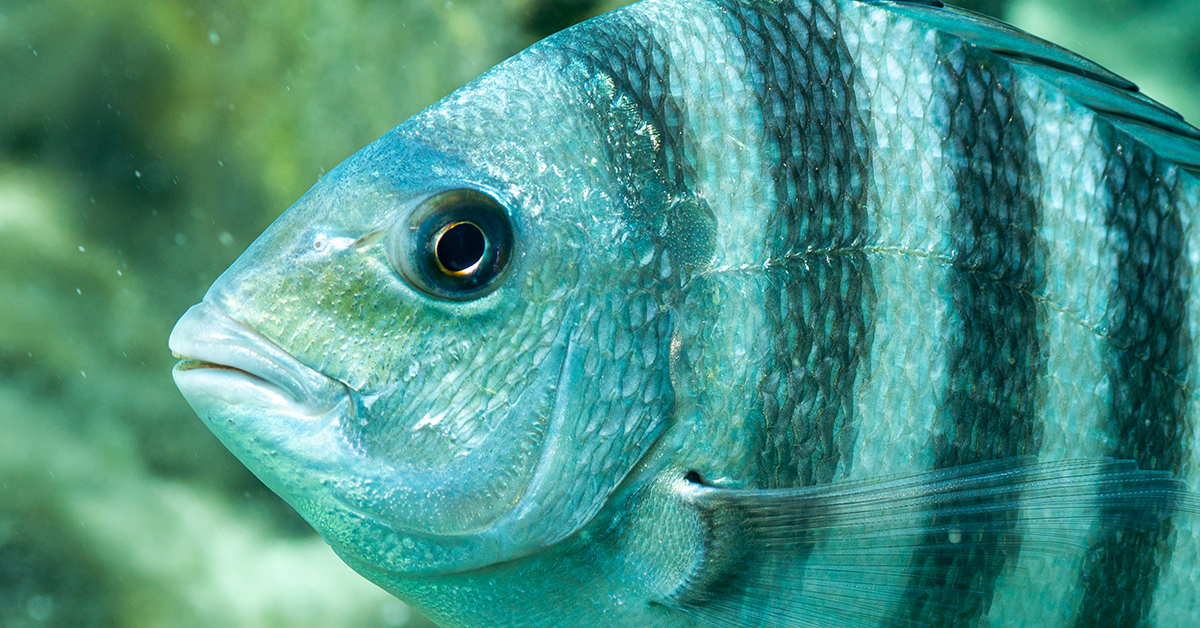
Are you one of those people who hangs up their fishing rods in the winter because the fishing is tough?
Or are you one of those people that gets excited about winter fishing because you know exactly how to catch fish (and lots of them) this season?
If you’re in the first group, this article will help bump you up into the second group and get you on some fish this winter, because this can be one of the best seasons for catching fish.
And if you’re already in the second group, we’ve got some tips in this article that will help you be even more consistent this winter!
Capt. Jim Klopfer from Sarasota Fishing Charters will be your guide on this journey as you learn how to master winter inshore fishing.
Let’s dive in!
Winter Fishing Strategies, by Capt. Jim Klopfer
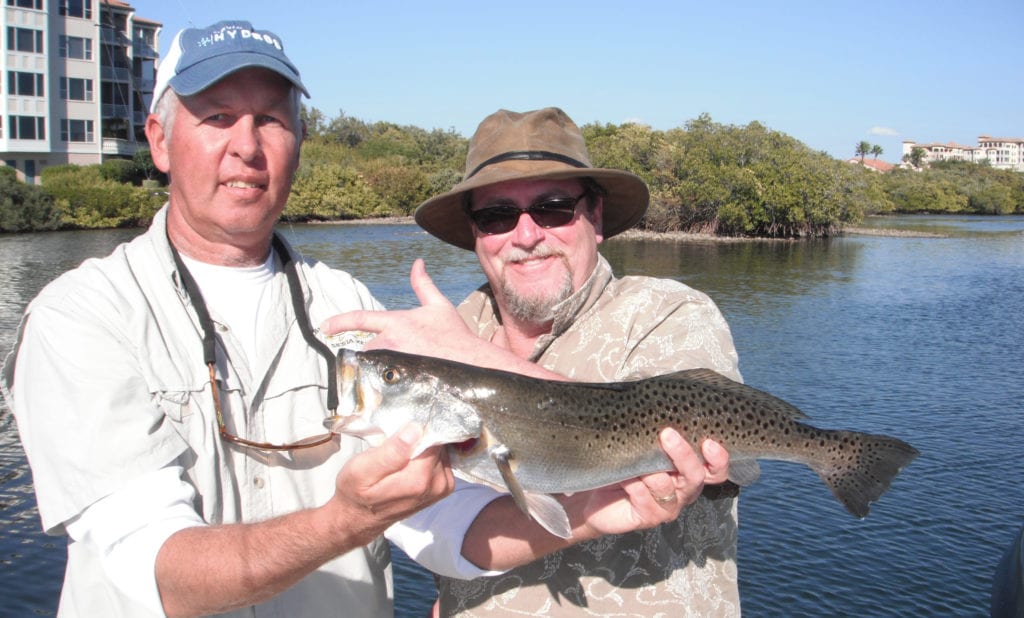
Winters are mild in Florida when compared to the rest of the country.
However, contrary to popular belief, Florida does experience seasonal changes.
These changes run the gamut from being quite mild to very severe.
Fishing in Florida in the winter can be challenging due to the constantly changing conditions.
The key to angling success in Florida in the winter is understanding how these constantly changing conditions affect fish behavior.
Both resident and migratory game fish species undergo some type of migration throughout the year.
There are very few spots that will produce the same species all year long.
Water temperature, water clarity, tide height, and available forage are all factors which will cause game fish to move about in search of more comfortable conditions.
Florida Winter Weather Cycle
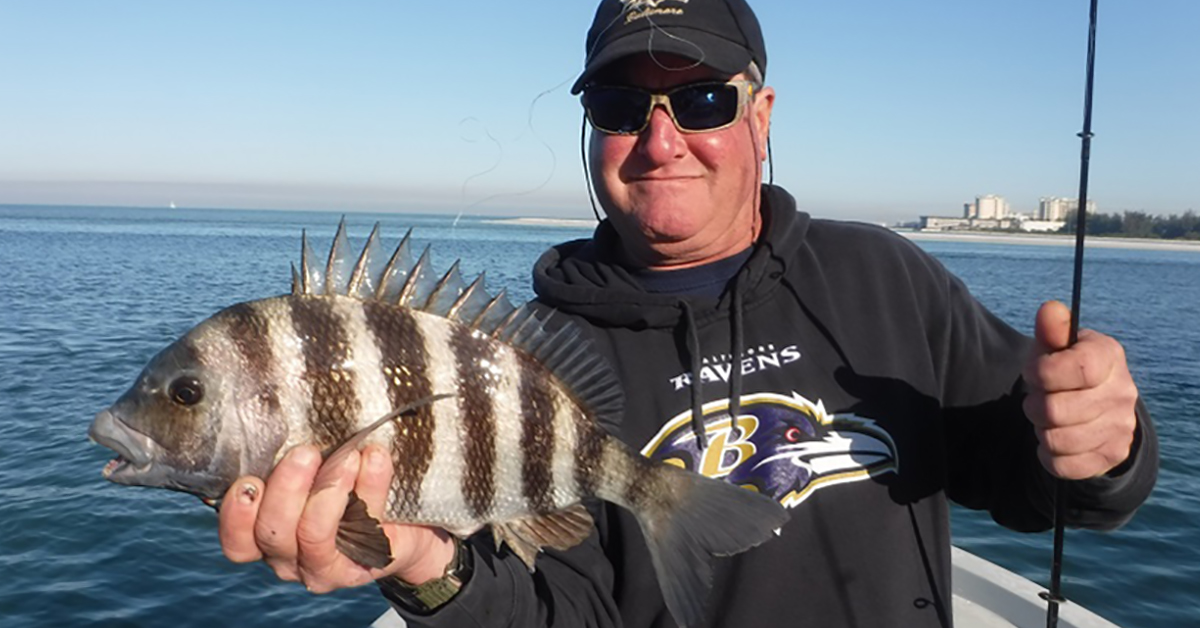
First, let’s go through the normal winter weather cycle.
As the front moves through it will bring strong northwest winds and perhaps a bit of rain.
This is a good day to stay home as conditions will not only be tough to fish, they can be downright dangerous.
The next day will bring north and northeast winds, bright sunshine and cool temperatures.
The second morning after the front will generally be the coldest day.
Winds will still be out of the northeast, and oftentimes quite brisk.
That afternoon will warm up and the next couple days will be very pleasant with mild temperatures and winds out of the east.
These can be delightful, and very productive, days to fish.
As the next front approaches, the winds will turn hard out of the south.
This can be the best day to fish as the fish seem to sense the approaching front.
Dealing with the wind can be challenging, but it is usually worth the effort.
Finally, the winds turn southwest then northwest as the cycle completes and then begins to repeat itself.
Effects of Winter Weather on Game Fish
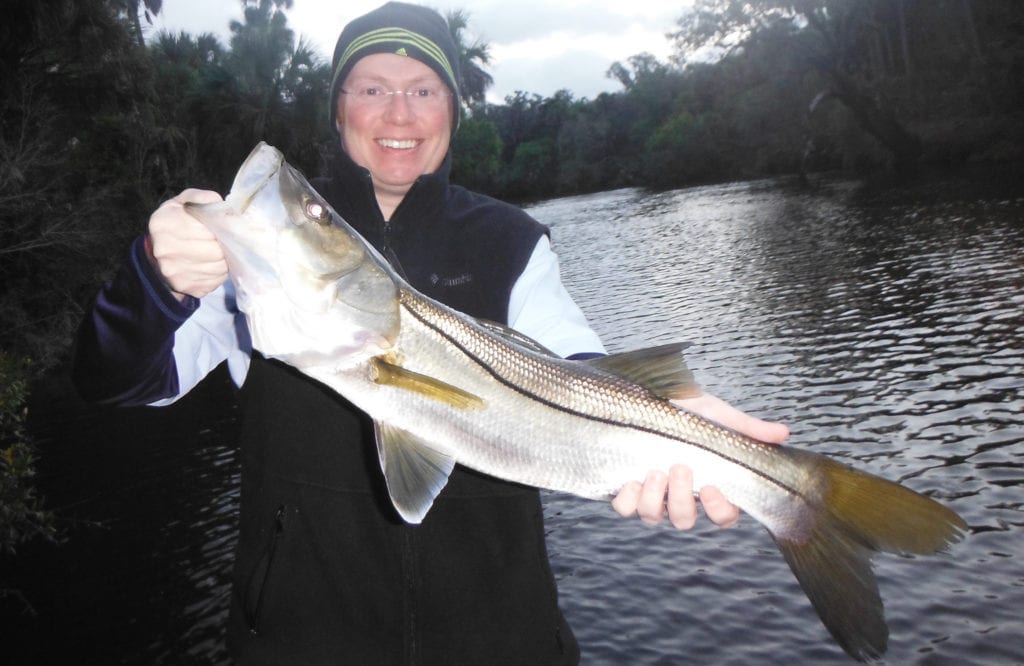
In order to be successful, anglers must be able to adapt to these ever-changing conditions.
This means they must understand how these changes will affect the locations and feeding habits of the game fish that they are targeting.
This is much more difficult in winter in Florida than it is at other times of year, as conditions are much more consistent in spring, summer, and fall.
Bottom and Structure Fishing
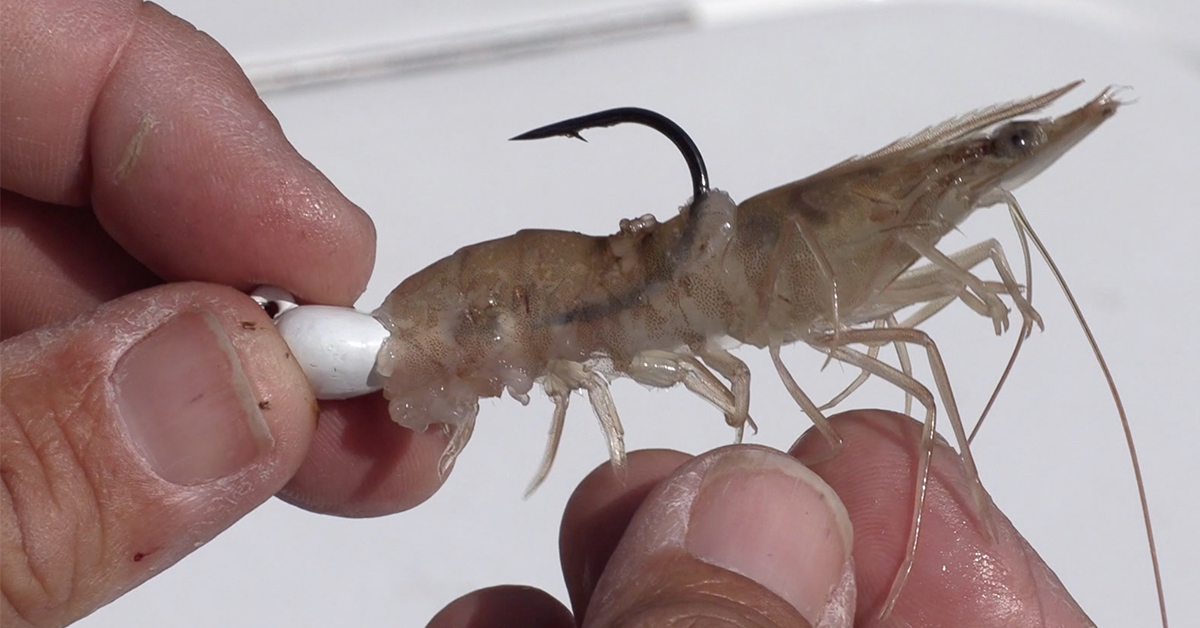
Fishing structure with live or frozen shrimp is the most reliable fishing technique for Florida anglers in the winter.
Fish in these areas tend to be less affected by the constantly changing weather as they do fish on the flats and in other areas.
Also, no matter which way the wind is blowing, docks in protected areas can usually be found that will offer anglers the chance to catch a few fish.
Finally, water clarity is much less of an issue with sheepshead, drum, and other bottom fish.
Just about any type of structure will hold fish at one time or another.
Bridges can be fish magnets in the wintertime!
Bridges are usually found in deeper water and have abundant structure as well as good current flow.
Docks can also be very productive spots and are often found in protected areas.
Seawalls, jetties, oyster bars, and artificial reefs are other productive areas to do some bottom fishing.
Sheepshead, black drum, redfish, flounder, grouper, snapper, and snook will all be found in these spots.
For the most part, this is fairly basic fishing.
Anglers in boats will position themselves just up current from the area to be fished.
The bait is then presented back to the structure in a very natural manner as it drifts with the tide.
Anglers fishing from piers, docks, and shore should take the same approach.
Live shrimp are generally preferred, though frozen shrimp will catch plenty of fish as well.
Many hard-core sheepshead anglers prefer to use fiddler crabs.
Bottom Fishing Rigs and Tackle
Various rigs will produce for anglers bottom fishing.
A weighted jig head is an easy way to go as it provides both weight and a hook in one simple device.
Most anglers opt for a variation of the “Carolina rig.”
How To Tie A Carolina Rig [VIDEO]
With this rig, an egg sinker is used which has a hole in the center.
The running line goes through the sinker and then a swivel is tied on.
A 24-inch leader with a hook is then tied to the other end of the swivel.
This is a very effective and time-proven bottom fishing rig.
Another effective rig is the “knocker rig.”
How To Tie A Knocker Rig [VIDEO]
With this rig, the weight rides right up against the eye of the hook.
The advantages of this rig are that the bait will lie right on the bottom and it is easier to free from snags than it is with other rigs.
On shallow spots, anglers can simply pinch on a couple of split shot 18 inches above the hook.
No matter what the rig, anglers should use the minimum amount of weight required to get the bait down to the bottom.
Hooks come in a myriad of sizes, styles, and finishes.
The hook size should be matched to the fish being targeted along with the bait being used.
In most applications, anglers bottom fishing in Florida in the winter will do well with a #1 live bait hook.
Smaller hooks may be required when the water is very clear or when fish are being finicky.
Many anglers have switched to using circle hooks, which results in the fish being hooked in the mouth as opposed to swallowing it down deep.
Flats Fishing Florida in Winter
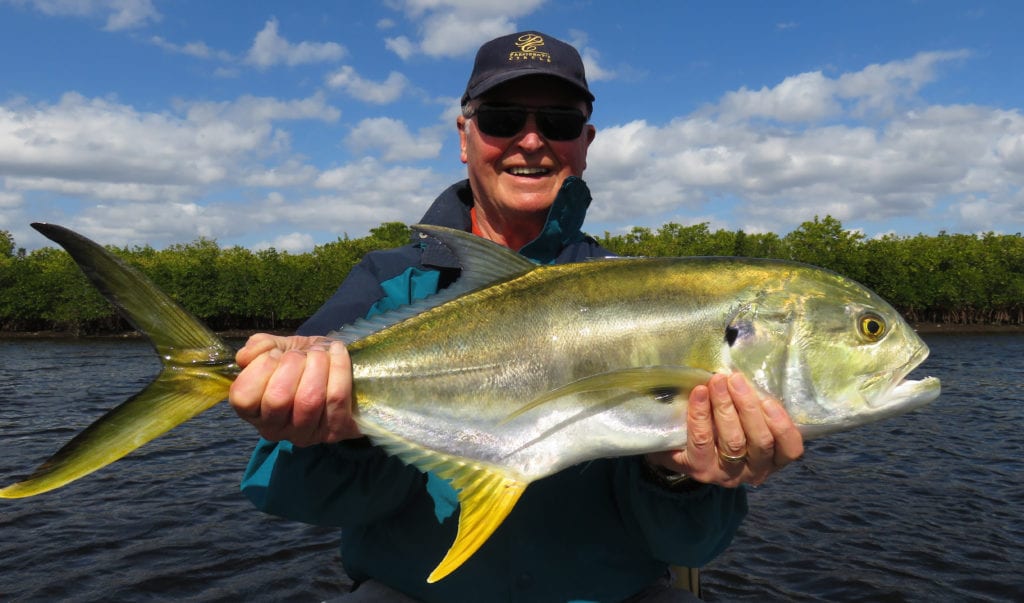
The flats are affected more by these constant changes in conditions than any other spots.
Anglers fishing the shallow flats will find that the hard northeast winds combined with winter low tides will often times find their favorite flats totally exposed.
Also, plummeting water temperatures will drive fish off of the shallow flats in search of deeper, warmer water.
These extreme low tides can offer some outstanding fishing to patient anglers.
This is especially true if they don’t mind getting their feet wet.
Due to the extreme low tides and lack of water, fish will gang up in deeper depressions, holes, and channels.
They do so because they really have no place else to go.
Anglers who locate a pothole or channel in an otherwise very shallow flat can experience non-stop action.
For the most part, wading is the best approach as there just is not enough water to navigate the flat in most boats.
Not only do game fish engage in seasonal migrations, but they also will do so daily.
Very low tides occur in Florida in winter, most often in the morning.
Fish will stage in deeper water off of the flat.
Anglers will have the best success by working the edges of bars and flats during this time.
As the tide rises and the water warms, fish will move up onto the flat to forage in the afternoon.
While the game fish may be more in a mood to feed, they are also more difficult to locate as they scatter about over a large flat.
In this situation, it is best to fish from a boat that is being poled along.
Fishing the Deep Grass Flats in Winter
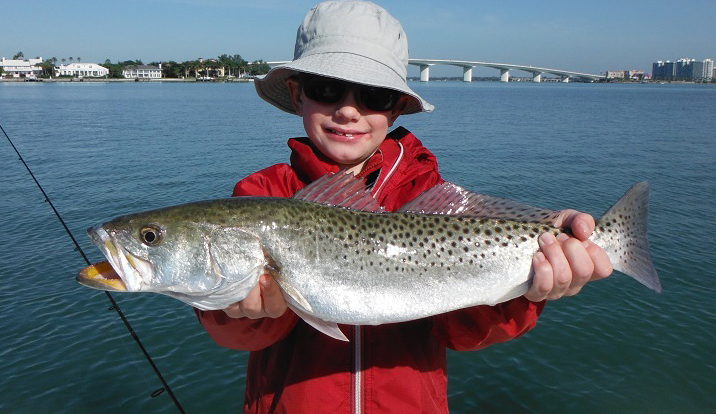
Submerged grass beds in deeper water can be great spots to fish in Florida in the wintertime.
Flats in water with nice grassy bottoms in depths of 6 feet to 10 feet will hold speckled trout, Spanish mackerel, pompano, bluefish, and other species.
Game fish will seek out slightly deeper areas when water temperatures are low.
The best approach when fishing the deep grass flats is to drift with the wind and the tide while casting artificial lures or live shrimp.
This allows anglers to cover a large flat in a relatively short amount of time.
Once fish are located, anglers can either anchor and fish the area thoroughly, or motor back around quietly at idle and make another drift.
Often times in winter, the key to success when fishing the deep flats is finding “clean” water.
Strong storms will churn up the water, turning it to mud.
Flats near the passes are especially prone to being covered up as the incoming tide floods the area with dirty water.
Flats further inland can often be the best spots. Successful anglers keep moving until fish are located.
Anglers will need to slow down their presentations this time of year as well.
Fish will not be as active in the colder water and fast, aggressive retrieves that work in the summer are usually less effective in the winter.
Slow, subtle presentations along with smaller baits are generally the way to go.
Soft plastic baits rigged on a jig head or swimbait hook are especially productive.
Many anglers go to scented baits as well as tipping the jig with a small piece of shrimp.
Anglers casting spoons and plugs will also catch fish, especially if they go with smaller baits and more subtle presentations.
For the most part, the days of filling the bait well with whitebait are over.
Live shrimp are by far the number one live bait used by Florida anglers fishing in the winter.
A large, hand-picked shrimp can be deadly when cast into a pothole.
Live shrimp are also extremely effective when fished over submerged grass under a noisy float.
River and Creek Fishing
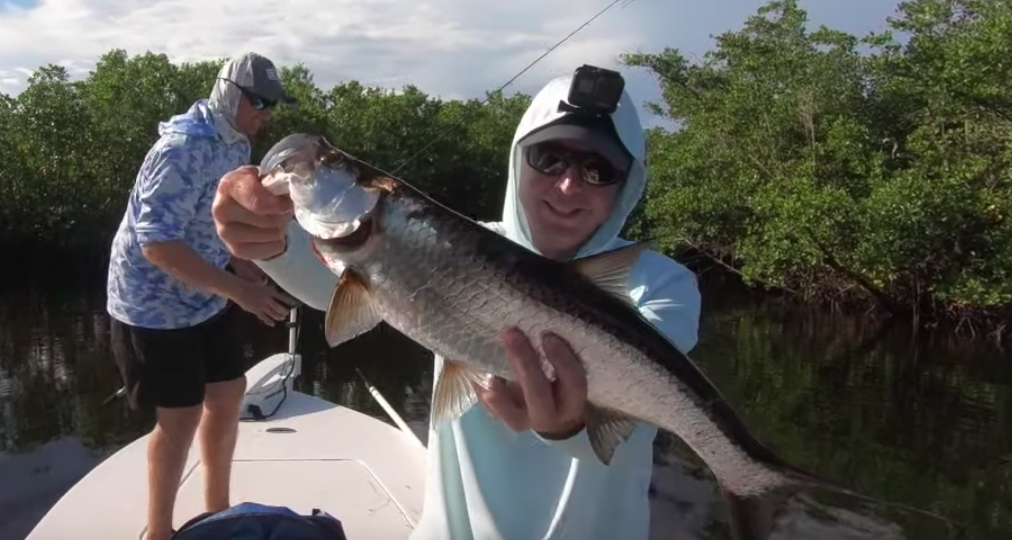
Cold weather will push snook and other species up into area creeks, rivers, and residential canals.
This can be a boon to anglers as it concentrates these fish in fairly small areas.
Game fish move up into these waters as they are generally significantly warmer than the exposed, open flats.
Along with snook, anglers can find jack crevalle, redfish, snapper, juvenile tarpon, and other saltwater species.
Anglers fishing brackish rivers will also have the opportunity to land freshwater species such as largemouth bass, catfish, and gar.
Snook Fishing in Creeks and Rivers
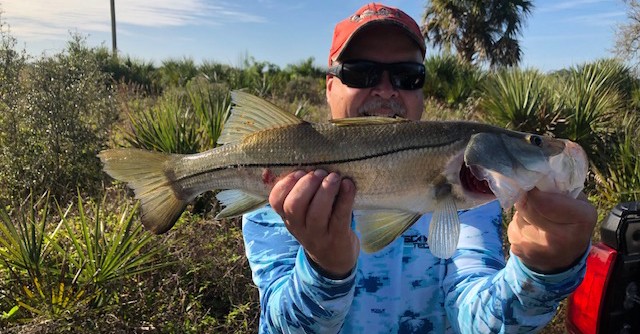
Creeks and rivers are great places to fish in Florida in the wintertime for several reasons.
First off, as previously mentioned, snook, jacks, and other saltwater gamefish will migrate up into these bodies of water in the winter.
River and creek waters are often darker and tannin colored.
This results in the water-absorbing more sunlight and thus becoming warmer.
Forage is also plentiful in creeks and rivers in the cooler months.
Often times, hordes of glass minnows will be seen in these areas.
Larger baitfish such as mullet can be found in good numbers as well.
In brackish rivers in creeks, bluegill and tilapia are abundant and are great forage for larger game fish.
These areas also offer protection from the wind, which can be quite strong in the winter.
Smaller creeks and rivers are fish-able even in 20-knot winds!
In fact, these “marginal” days often offer the best fishing.
Finally, river and creek fishing provides anglers with a serene, relaxing fishing trip with great scenery which can be a nice change from other types of inshore saltwater fishing.
Residential canals can also offer anglers some great fishing as well.
While the scenery might not be as nice as when fishing creeks and rivers, these canals are generally more accessible to anglers in larger boats.
Most canals are dredged and therefore fairly deep within an abundance of structure including docks and seawalls.
Generally, the colder it is, the further back in the canals the fish will move.
River Snook Fishing Techniques
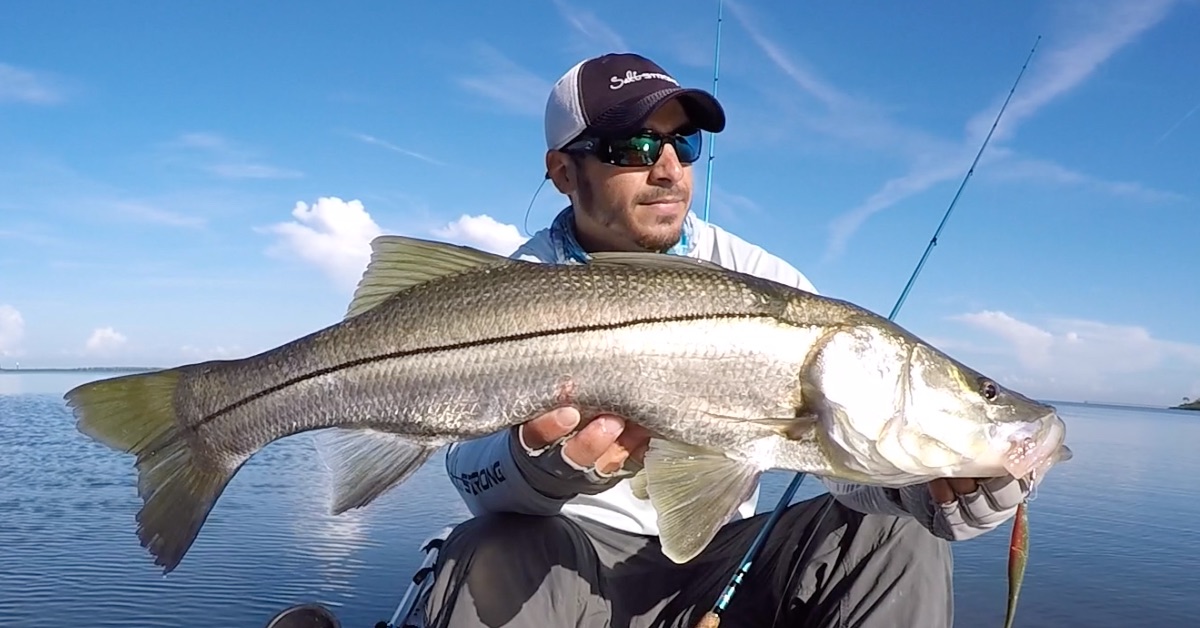
In most instances, artificial lures are the best choice when targeting snook and jacks in rivers, creeks, and canals.
More often than not, game fish will be scattered throughout the body of water as opposed to being bunched up in one spot.
Artificial lures allow anglers to cover a lot of water in a relatively short amount of time.
The prime spots in natural creeks and rivers are without a doubt the outside bends.
These spots usually have a deeper hole that is gouged out by the current.
They are also natural collecting spots for debris such as fallen timber.
Between the structure, current, and water depth, these are ideal holding spots for game fish
Any cover found in the water is a potential fish-holding spot.
Fallen trees are prime spots and should be worked thoroughly.
Tributaries entering the main channel, particularly on an outgoing tide, are excellent spots as well.
Docks, seawalls oyster bars, and limestone shorelines are also worth a few casts.
Top River Fishing Lures
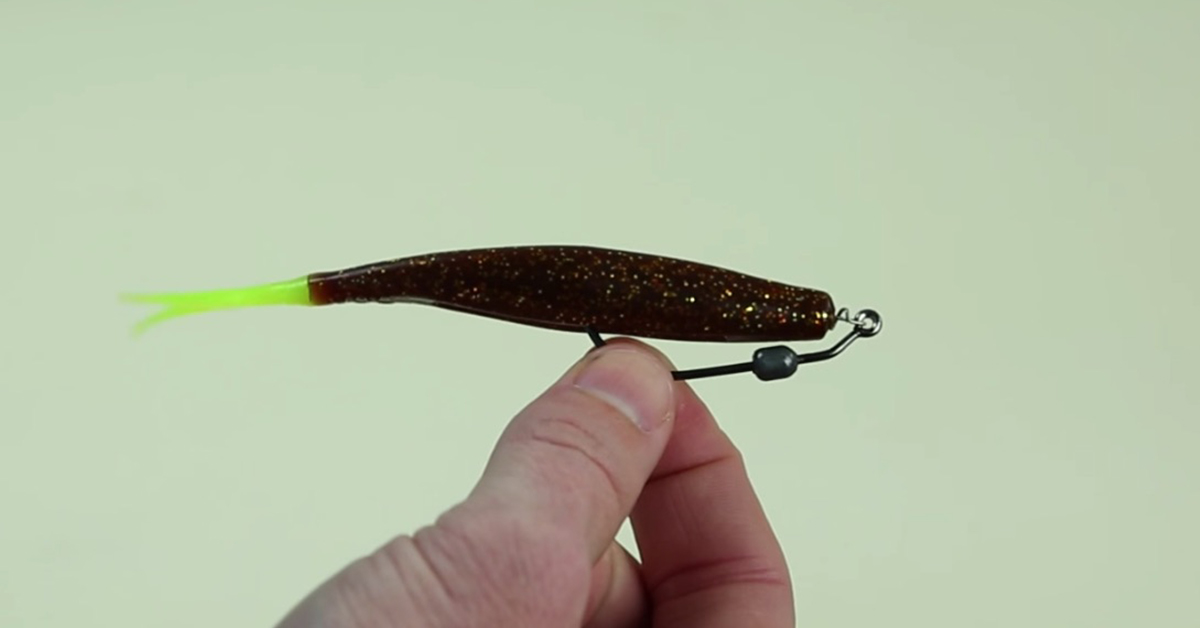
The top two artificial lures for fishing Florida creeks and rivers are shallow diving plugs and soft plastic baits.
Plugs are great “locator” baits as they will cover a lot of water fairly quickly and tend to elicit reflex strikes.
Plugs such as the Rapala X-Rap and Yozuri Crystal Minnow are proven baits.
The key is to cover the prime strike zone between four and 8 feet deep.
Topwater plugs can catch a few fish, though the water is generally a little too cool for prime topwater fishing conditions.
Gold, white, and fire tiger are effective color patterns.
These plugs are cast out towards likely shoreline cover and structure and brought back to the boat using a sharp twitch or two followed by a pause.
These types of baits are known by bass anglers as “jerk baits” due to the manner in which they are retrieved.
Often times, the take occurs as the bait sits there motionless in the water.
Plugs are also terrific lures to use when trolling, which is a very effective technique that will locate fish in a short amount of time.
This is particularly true in straight, residential canals.
Soft plastic baits are extremely effective when fishing Florida rivers!
These baits come in many different sizes, shapes, and colors.
However, the same basic baits anglers use for inshore saltwater fishing will produce and rivers as well.
Shad tail and fluke style baits can be used either on a jig head or a swimbait hook.
In either case, make sure the hook is stout as fish to 20 pounds may be encountered. Darker colors such as golden bream are a good place to start.
Soft plastic baits work very well in the deeper water of holes where they can effectively be worked over the bottom cover and structure.
They are also good choices when the water temperature is low and fish may not actively chase a faster moving plug.
Quite often, fish will take the bait on the initial fall or after the first hopper to.
For this reason, in order to fish efficiently, most anglers real the bait back in quickly after working at the first several feet.
Conclusion
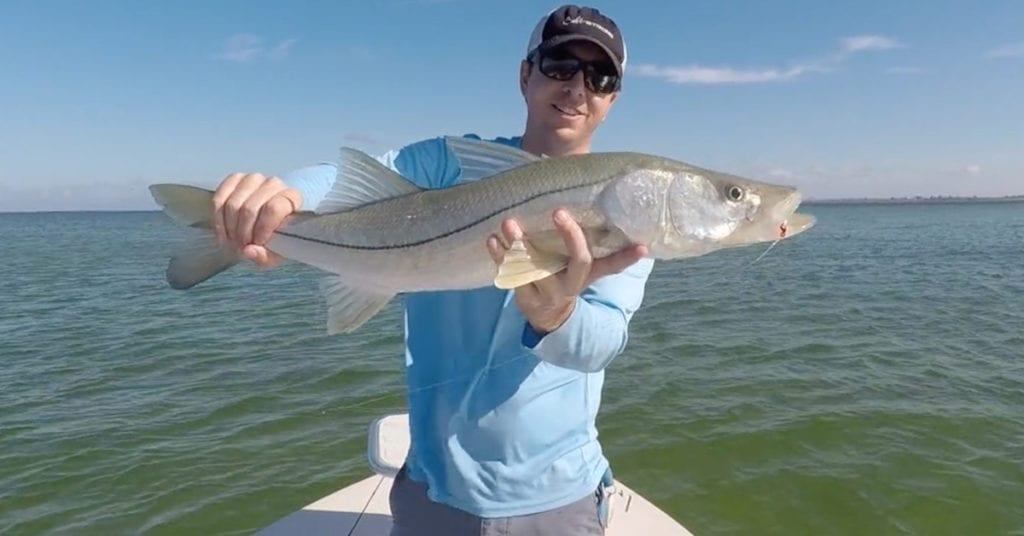
Anglers who take the time to learn how the constantly changing weather in winter affects fish behavior will catch more fish!
It’s not that the fish have lockjaw, or that they don’t eat, you just need to switch up your strategies from other times in the year.
Have any questions about fishing in the winter?
Let us know in the comments below!
And if you want to learn more about Capt. Jim Klopfer, check him out at his website FishingLidoKey.com.
P.S. Want the best local fishing spots, discounts on fishing gear, and to stay up to date with what and where the fish are biting right now? Join us in the Insider Club!
Do You Want To Quickly Find New Fishing Spots In Your Area?
Then you’ve got to see this private fishing club!
Here’s what you’ll receive today:
- Weekly fishing reports and TRENDS revealing where the inshore fish are feeding all year long
- Weekly “spot dissection” videos that walk you through all the best spots in certain areas
- Exclusive fishing tips from the PROS you can’t find anywhere else
- Everything you need to start catching fish more consistently (regardless if you fish out of a boat, kayak, or land).
Click here to join today.
Related articles:
Related categories:
STOP WASTING TIME ON THE WATER!
Do what the “SMART ANGLERS” are doing and join the Insider Club.
Here’s what you’ll receive today when you join:
- Weekly fishing reports and TRENDS revealing exactly where you should fish every trip
- Weekly “spot dissection” videos that walk you through all the best spots in your area
- Exclusive fishing tips from the PROS you can’t find anywhere else
- Everything you need to start catching fish more consistently (regardless if you fish out of a boat, kayak, or land).

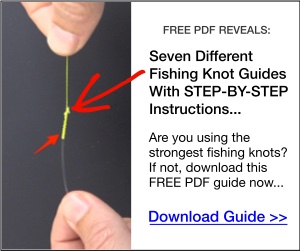








Luke once trout, snook and redfish move into channels do they stay? For instance if the air temps hit 80f for a few days do they go back out to the bay flats until another cold front?
What are your tips for hooking sheepshead?
very well put together. A lot of information on one page. clearly see how the tactics change for winter fishing. For me, its go time. the best part of the year to go fishing. tight lines….